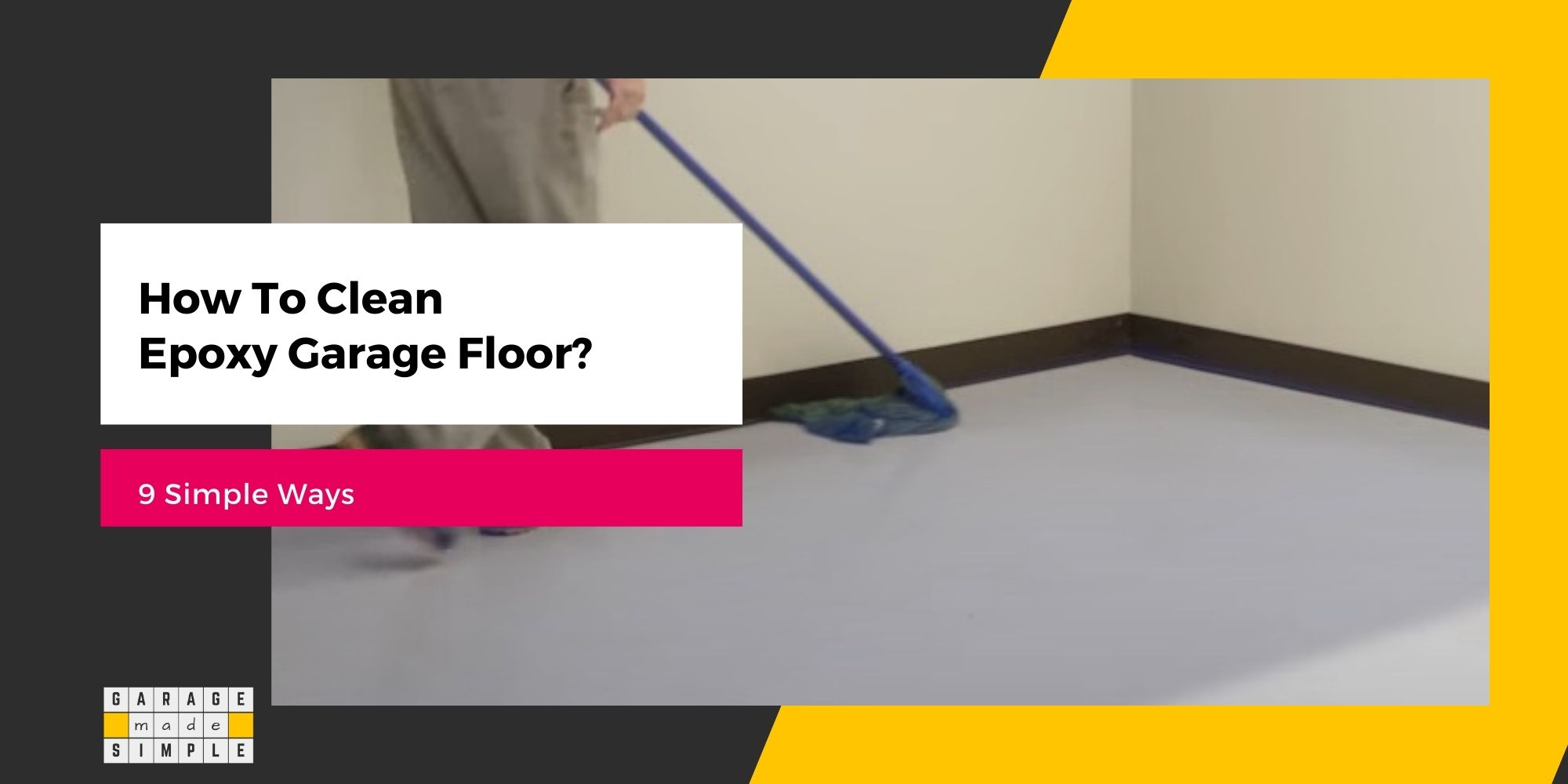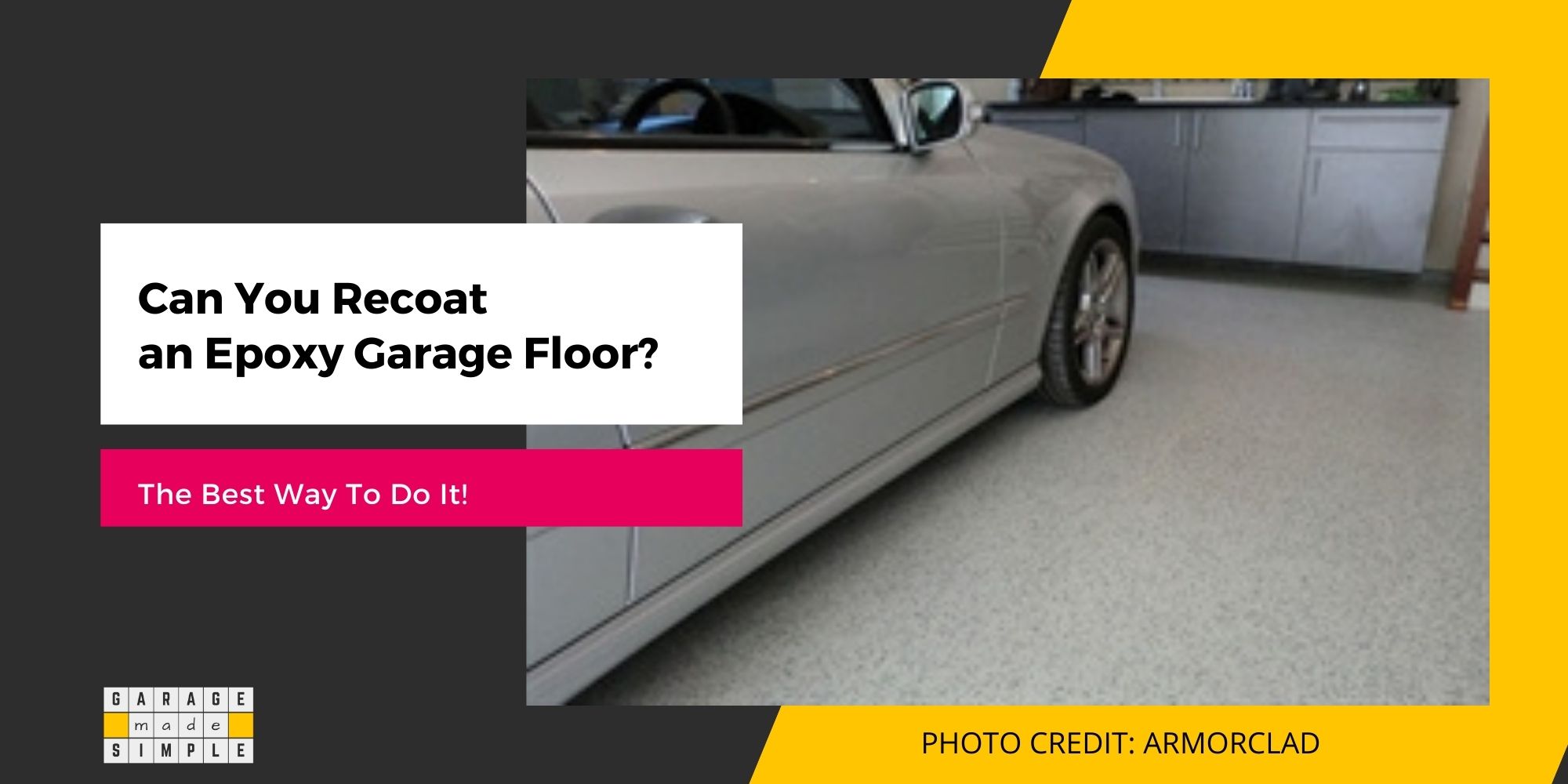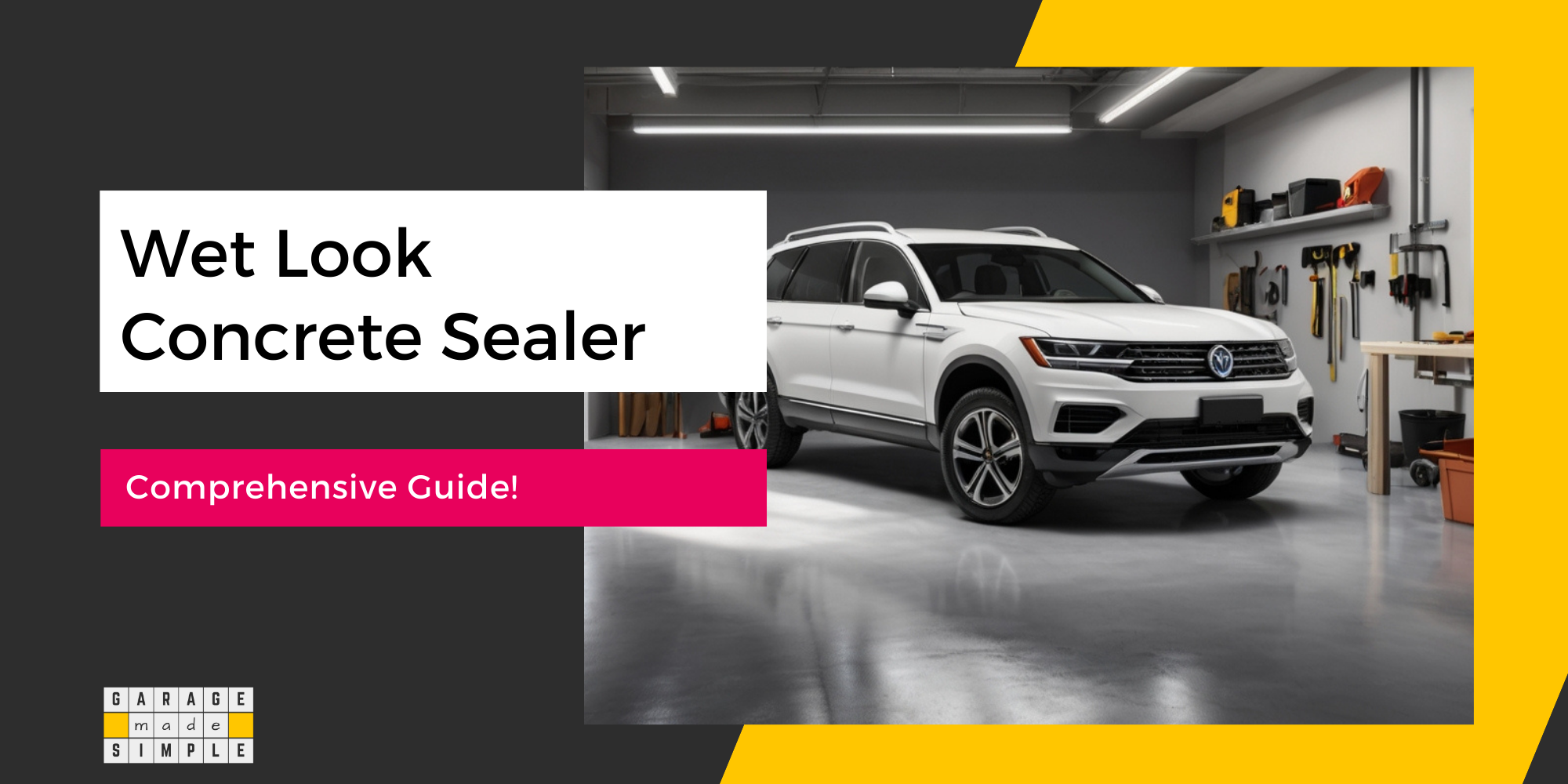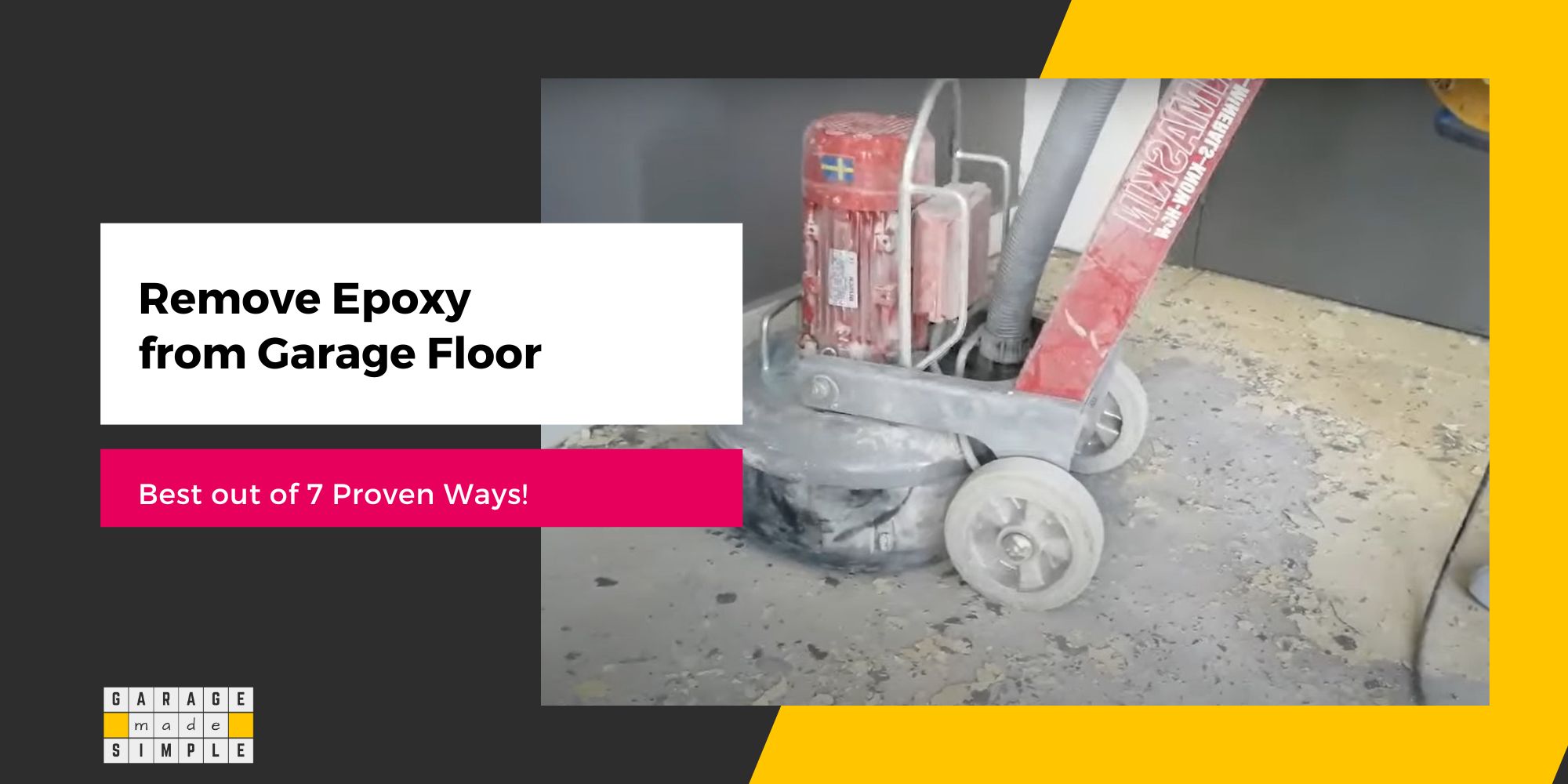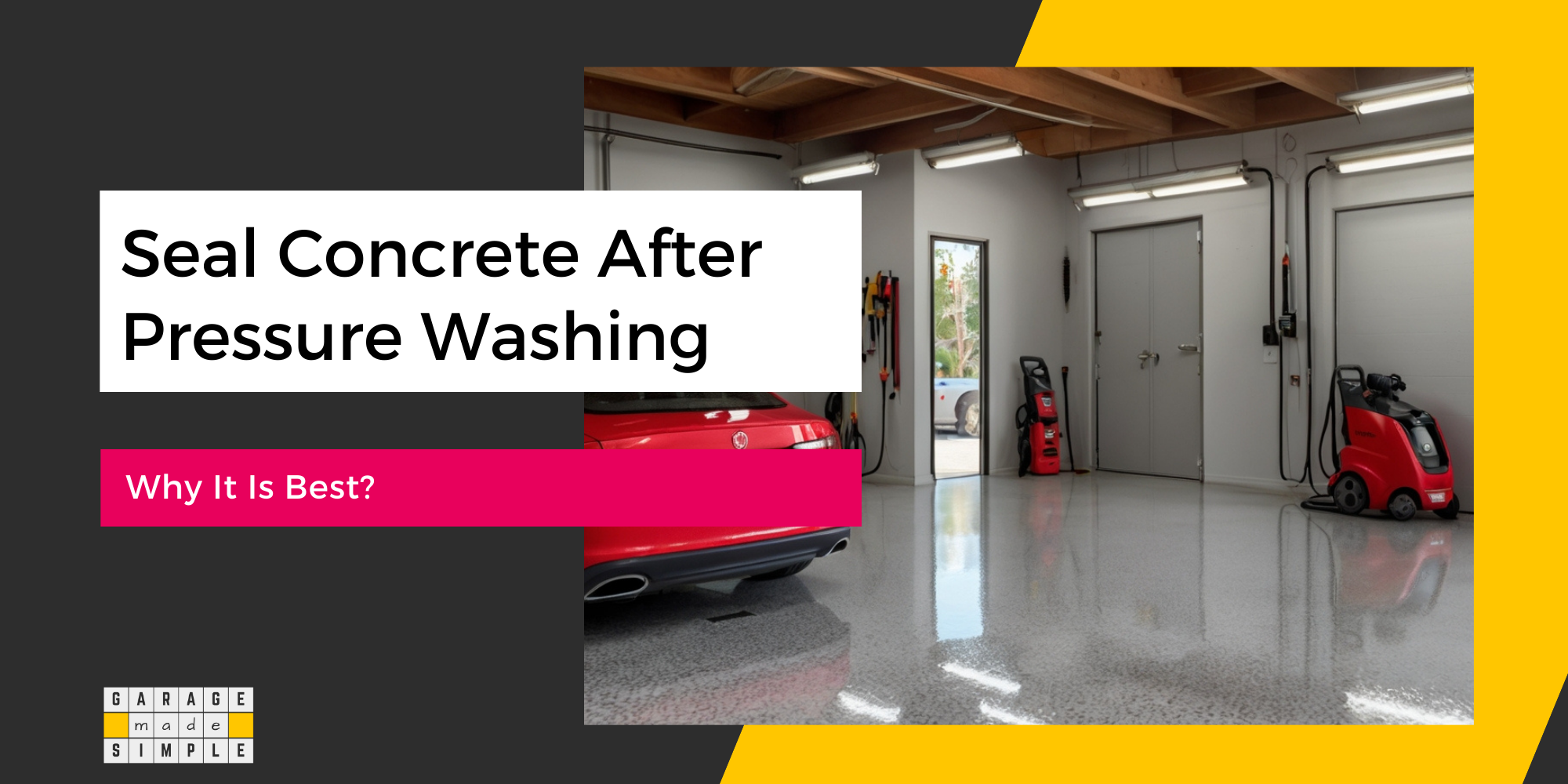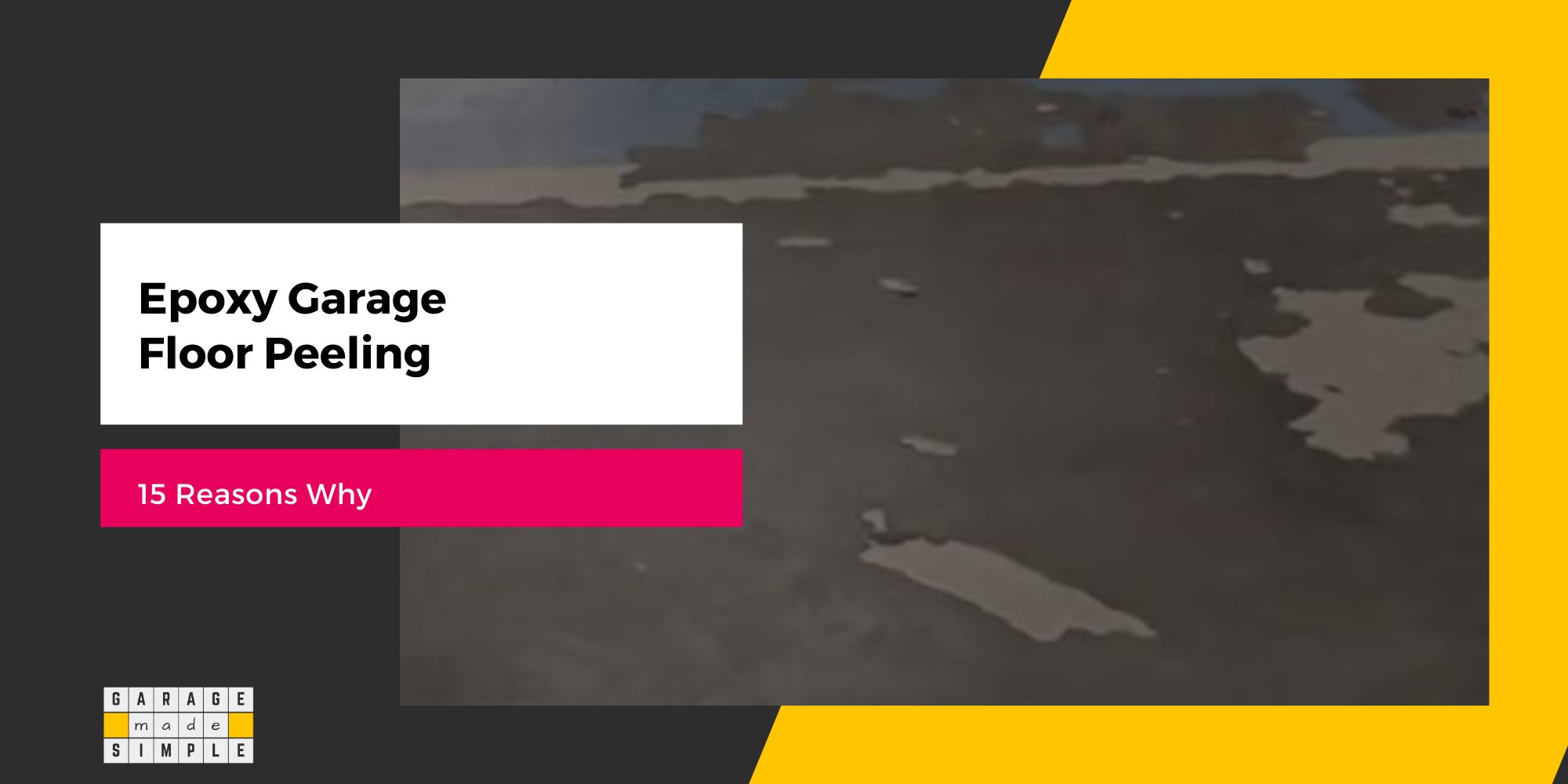Can You Paint Over an Epoxy Garage Floor? Comprehensive Guide
As an Amazon Associate, I earn from qualifying purchases.
Can You Paint Over an Epoxy Garage Floor?
Your garage floor takes a lot of punishment, especially with daily car traffic, heavy equipment like lawnmowers, and constant wear and tear.
Over time, your epoxy coating can start to show signs of damage. So, what do you do when it looks weathered? Can you paint over an epoxy garage floor? Let’s find out!
You can paint over an epoxy garage floor provided:
- The new paint is compatible with the existing epoxy floor
- The surface is prepared to promote adhesion
- A primer is used as a tie-coat
In this post, I will explain Epoxy Floor Paint and Epoxy Floor Coatings (spoiler alert: they are not the same), the compatibility between different paints & coatings, and how to paint over epoxy-painted floors.
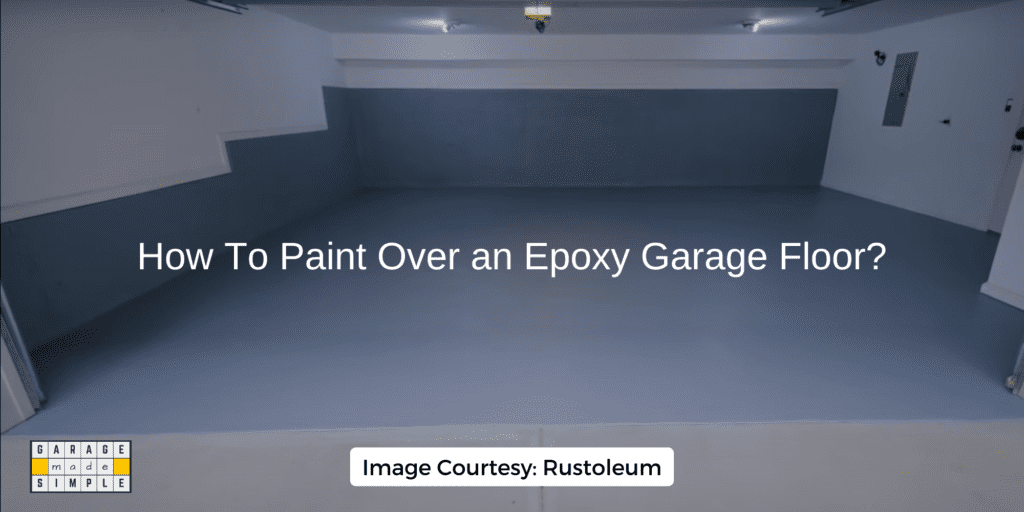
So let us start with understanding what epoxy paint is.
What Is Epoxy Paint?
There are quite a few misconceptions when it comes to paints and coatings. When it comes to Epoxy Paint vs Epoxy Coating, the differences are:
- Epoxy Floor Paint is 1 part. while Epoxy Floor Coating has 2 parts.
- Epoxy Floor Paint “dries” while Epoxy Floor Coating “cures”.
- Dry Film Thickness (DFT) of Epoxy Floor Paint is less than 2 mils. while the DFT of Epoxy Floor Coating is more than 2 mils.
- Epoxy Floor Paint has lower solids and less Epoxy resin than Epoxy Floor Coating.

To paint over an epoxy garage floor, check whether the existing application is 1-part epoxy paint or a 2-part epoxy coating.
What Type of Paint Is Compatible with 2-part Epoxy Floor Coating?
The paints & coatings that are compatible with 2-part (aka 2K) epoxy floor coatings are as under:
Latex (aka Acrylic) Paints
Latex paints use latex or acrylic resin as the binder.
Latex paints are compatible with epoxy. The advantage is that they are UV resistant and protect the epoxy floor coating. Epoxy has very poor UV resistance. The disadvantage is that they form a thin layer with low abrasion resistance.
Alkyd Enamels
Alkyd enamel, marine enamel, acrylic enamel, alkyd modified epoxy, alkyd varnishes, etc. use alkyd resin as the binder.
Alkyd-based paints are compatible with epoxy. Their advantage is that they are readily available and are relatively cheap.
The problem is that, like epoxy, they too have low UV resistance. Furthermore, they have low abrasion resistance too!
You are better off using Acrylic Paints rather than Alkyd Enamels.
One-part Polyurethanes (PU)
One-part polyurethanes are a better option than alkyd enamels. They are compatible with most epoxies and have a higher abrasion resistance.
The disadvantage is that they are costlier and at times may not be compatible with amine-cure epoxy systems.
One-part Epoxy Floor Paints
One-part Epoxy Floor Paints are just modified acrylic resin-based (modified with a small amount of epoxy resin) paints. Their compatibility and performance as a topcoat for 2-part epoxy coatings is slightly better than standard acrylic paints.
Two-part Epoxy Coatings
Two-part epoxies have the best compatibility as it’s essentially the same product as the existing garage floor coating. It is not UV resistant but that is not a serious problem as the application is indoors.
Two-part Polyurethane (PU) Coatings
Two-part polyurethane coatings are compatible with epoxy floor coatings. PU is not as hard as epoxy but it is tougher and more flexible.
PU is also UV resistant and retains its gloss level. More often than not, a PU clear coat is used as a topcoat on epoxy garage floor coating.
The disadvantage is that they are expensive and are difficult to apply.

What Type of Paint Is Compatible with 1-part Epoxy Floor Paint?
The paints & coatings compatible with 1-part epoxy floor paints are:
Latex (aka Acrylic) Paints
Latex paints use latex or acrylic resin as the binder. They are compatible with 1-part epoxy floor paints as both use the same resin type.
Alkyd Enamels
Alkyd enamel and similar paints and varnishes use alkyd resin as the binder.
Alkyd-based paints are generally compatible with 1-part epoxy floor paints but check for adhesion.
Most oil-based paints have adhesion problems with 1-part epoxy floor paints. They can also react to cause blistering or peeling.
Pro Tip: Make a small test patch to ascertain the compatibility before painting the entire garage floor. Anyway, use a primer for good adhesion.
How to Paint Over Epoxy?
To paint over epoxy floors follow the steps below:
Repair Cracks, Holes, Dents & Chips
Garage Concrete Floor Slabs always have cracks. The cracks can grow due to soil movement or thermal expansion.
Garage floors tend to get chipped due to the movement of garden equipment such as lawnmowers & ladders.
The floor in the garage workshop area often gets dented as tools or heavy auto parts can drop on the floor.
You should repair all the cracks, holes, dents & chips before embarking on surface preparation. You need to clean the damaged part of the garage floor and fill it up either with an epoxy patching compound or a cementitious patching motor.
Epoxy patching compounds are better as they cure within a few days. Cementitious patching mortar can take a few weeks.
Clean, Degrease & Remove Stains
One of the reasons new paint will not adhere to the existing epoxy coat and may peel is that the garage floor may be dusty or may have grease & oil spills or stains.
Therefore the first step is to remove the dust by sweeping or vacuuming the floor. This will let you clearly identify the areas that need to be degreased.
Now that the garage floor is somewhat clean you will be able to spot the stains. The most obvious ones are those from grease or motor oil from the cars. Use a degreaser on the stains and let it soak for 15 to 20 minutes.
Use a brush to scrub the stains till they are gone. Do not wait too long, else the degreaser will dry out along with the muck.
Rough Up the Existing Epoxy Coat
An epoxy floor coating is glossy, smooth, and hard. The new paint will not be able to find a foothold on such a surface. You need to physically rough up the existing epoxy coating so that the new paint can find crevices to cling onto.
Sand the existing epoxy floor, using 120 grit sandpaper. Go light on the sanding as you only want to roughen up the surface and not remove the epoxy.
In case the existing epoxy floor had a clear epoxy topcoat too, then you should 80 to 100-grit sandpaper. In this case, you want to remove a bit of the topcoat that may have scratches.
Wash the Garage Floor
Sanding would have created some dust. It is best to wash the garage floor with soap water. Use a mop or squeegee to push the water toward the drain or the garage door.
Ensure the garage floor is absolutely dry and there is no moisture on it before the next step.
Apply a Coat of Primer
A primer coat may seem unnecessary. However, applying a primer coat is helpful in two respects.
- The primer functions as a tie coat between the existing epoxy and the new paint film to ensure adhesion.
- The primer helps in color transition, especially when applying light-colored paint on a darker epoxy floor. You will use less paint.
Applying the Paint Coat
Preparation and application of the paint topcoat depends on the type of paint you are going to use. The application of one-part acrylic paints or alkyd enamels is relatively simple. You may already be familiar with the process.
When using 2-part epoxy or polyurethane coatings, then it is very important to ensure that the two parts are mixed in exactly the same ratio as mentioned on the packaging. Otherwise, you will not get full curing and hardness.
2-part coatings cure through a chemical reaction. The pot life of the mixture is usually between 20 to 40 minutes. You should mix only the quantity you can apply within that time frame.
When painting the entire garage floor, use masking tape to cover areas that should not get painted. For example, use masking tape on the lower part of the garage wall.
Use a paintbrush on the perimeter and a roller for the main area of the garage floor.
You may need to apply more than one coat of paint. This depends not only on the paint but also on the difference in colors.
Let the new paint or coating dry or cure for the time mentioned in the manufacturer’s technical data sheet. Check the paint or coating for tackiness before placing anything or walking on it.
In conclusion, you can make your old epoxy garage floor look like new by overcoating it.
Thank you very much for reading the post. I do hope you found it informative and useful.

